Warning: Beijing will completely shatter your expectations of what a Chinese city looks like.
When most Westerners think of Beijing, they picture smoggy skyscrapers and communist architecture. But step off that plane at Beijing Capital International Airport, and you’re in for the cultural shock of a lifetime. This isn’t just another Asian megacity – it’s a mind-bending fusion of 3,000-year-old temples sitting next to gleaming shopping malls, where you can sip craft cocktails in a 600-year-old hutong alley.
After helping thousands of foreign travelers navigate Beijing’s incredible Beijing attractions, I’ve compiled this definitive list of the 17 experiences that will leave you completely rethinking everything you thought you knew about China. These aren’t just tourist traps – they’re the must-see Beijing landmarks that locals actually recommend, mixed with cutting-edge new destinations that represent Beijing’s rapid evolution.
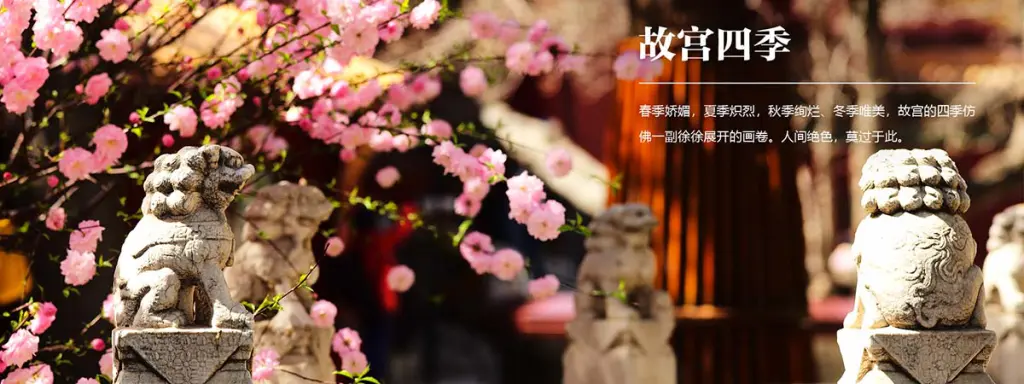
- 1. The Great Wall of China (Mutianyu Section)
- 2. Forbidden City (Palace Museum)
- 3. Temple of Heaven (Tiantan Park)
- 4. Tiananmen Square
- 5. Summer Palace (Yiheyuan)
- 6. Lama Temple (Yonghe Gong)
- 7. Beihai Park
- 8. 798 Art District
- 9. Hutong Neighborhoods (Nanluoguxiang & Shichahai)
- 10. Beijing National Stadium (Bird's Nest)
- 11. Wangfujing Street
- 12. Ming Tombs (Dingling)
- 13. Jingshan Park
- 14. Prince Gong's Mansion
- 15. Olympic Park and National Centre for the Performing Arts
- 16. Shougang Park (Beijing's Cyberpunk Industrial Wonder)
- 17. Liangma River International Waterfront
- 2025 Travel Essentials for Beijing
1. The Great Wall of China (Mutianyu Section)
Let’s address the most iconic attraction first. Yes, many tourists visit the Great Wall, but choosing the right section makes all the difference. While Badaling is easily accessible and historically significant, Mutianyu offers a more manageable experience with equally stunning views and fewer tour buses.
Here’s what nobody tells you: the Great Wall isn’t just a wall – it’s a 13,000-mile testament to human stubbornness that snakes across mountains like a stone dragon. At Mutianyu, you can actually walk on sections where the stones beneath your feet were laid by workers over 600 years ago.
Cultural Shock Alert: The Wall is steeper than you think. Those Instagram photos don’t show you gasping for breath after 20 minutes of climbing steps that weren’t built for modern shoe sizes.
2025 Booking Alert: You must book tickets online in advance through the official WeChat mini-program “慕田峪长城” or official website. No tickets are sold at the gate.
Practical Tips:
- Book 1-7 days in advance with your passport information
- Take the cable car up, walk down if you’re feeling brave
- Bring water – lots of it
- Visit on weekdays if possible
- Current ticket price: ¥45 for adults (cable car extra ¥140 round trip)
Getting There: Take the 916 express bus from Dongzhimen to Huairou, then transfer to bus H23 to Mutianyu (2 hours total), or book through official tour operators
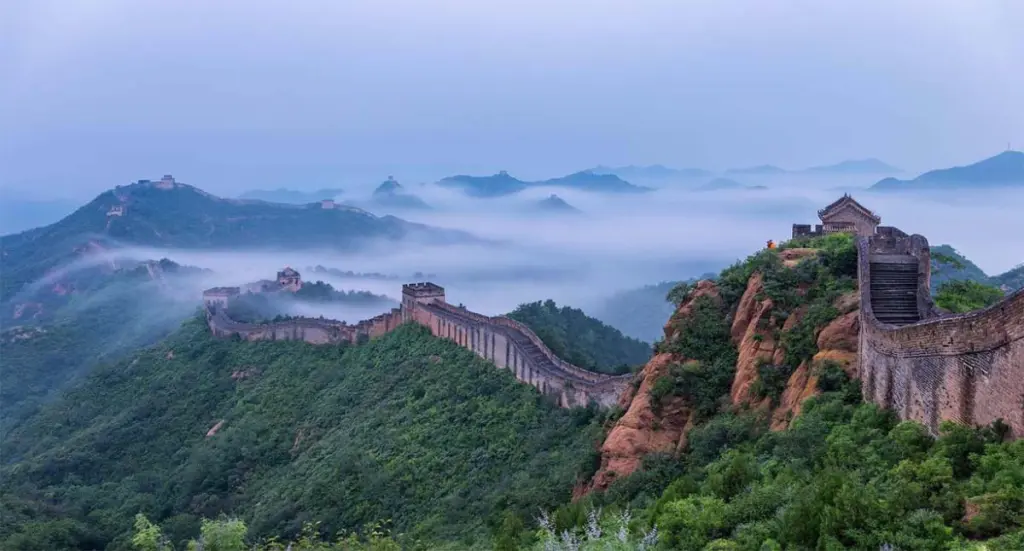
2. Forbidden City (Palace Museum)
Walking into the Forbidden City is like entering a real-life Game of Thrones set, except this one housed actual emperors for 500 years. This isn’t just one of the top Beijing attractions – it’s the world’s largest palace complex, and it will make Versailles look like a cottage.
The mind-blowing part? For 500 years, ordinary Chinese people weren’t allowed to even peek inside these red walls. The penalty for trying was death. Now you can wander through the same halls where emperors made decisions that affected a quarter of the world’s population.
The “Aha!” Moment: Stand in the Hall of Supreme Harmony and realize you’re in the exact spot where the last emperor of China was crowned as a three-year-old child. The marble stairs you’re looking at? Carved from single blocks of stone and transported here in winter by creating ice slides.
2025 Visiting Requirements: All visitors must enter through Meridian Gate (South Gate) and exit through Gate of Divine Might (North Gate) or Donghua Gate (East Gate). The palace operates on a one-way system, so plan your route accordingly.
Essential Booking Info:
- Book tickets online through the Palace Museum’s official website or WeChat mini-program “故宫博物院”
- ¥60 for peak season (April-October), ¥40 for off-season
- Limited to 30,000 visitors per day – book 1-10 days in advance
- Audio guides available in multiple languages
Insider Secret: Start early (8:30 AM opening) to experience the palace with softer morning light and fewer crowds in the outer courtyards.
Essential Areas:
- Hall of Supreme Harmony (the throne room)
- Imperial Garden (surprisingly peaceful)
- Clock Exhibition Hall (mind-bending clockwork from Europe)
- Treasure Gallery (if you like shiny things)
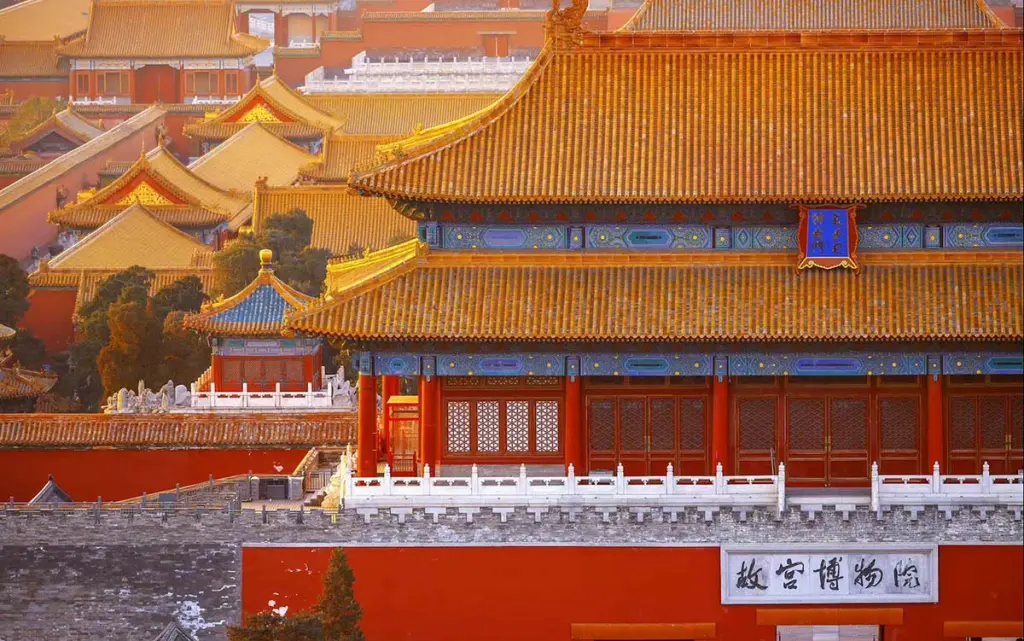
3. Temple of Heaven (Tiantan Park)
This isn’t just a temple – it’s where the Emperor of China literally talked to God. Every year for over 500 years, emperors came here to pray for good harvests. If the crops failed anyway, it was seen as proof that the emperor had lost the “Mandate of Heaven” and should be overthrown.
The Temple of Heaven will mess with your understanding of Chinese spirituality. This isn’t Buddhism or Taoism – it’s something older and more primal. The architecture itself is designed as a cosmic diagram, with every measurement based on numbers considered sacred by ancient Chinese cosmology.
The Acoustic Marvel: Stand in the center of the Echo Wall and whisper – someone 65 meters away will hear you clearly. No one knows exactly how this works, but it’s been freaking out visitors for centuries.
Morning Culture Shock: Arrive at 6 AM and watch hundreds of elderly Chinese people practicing tai chi, playing traditional music, and ballroom dancing. This is real Beijing life happening in a 600-year-old sacred space.
Pro Tips:
- The park is huge – allow 3-4 hours
- Bring comfortable walking shoes
- Early morning (6-8 AM) is magical for photos and local culture
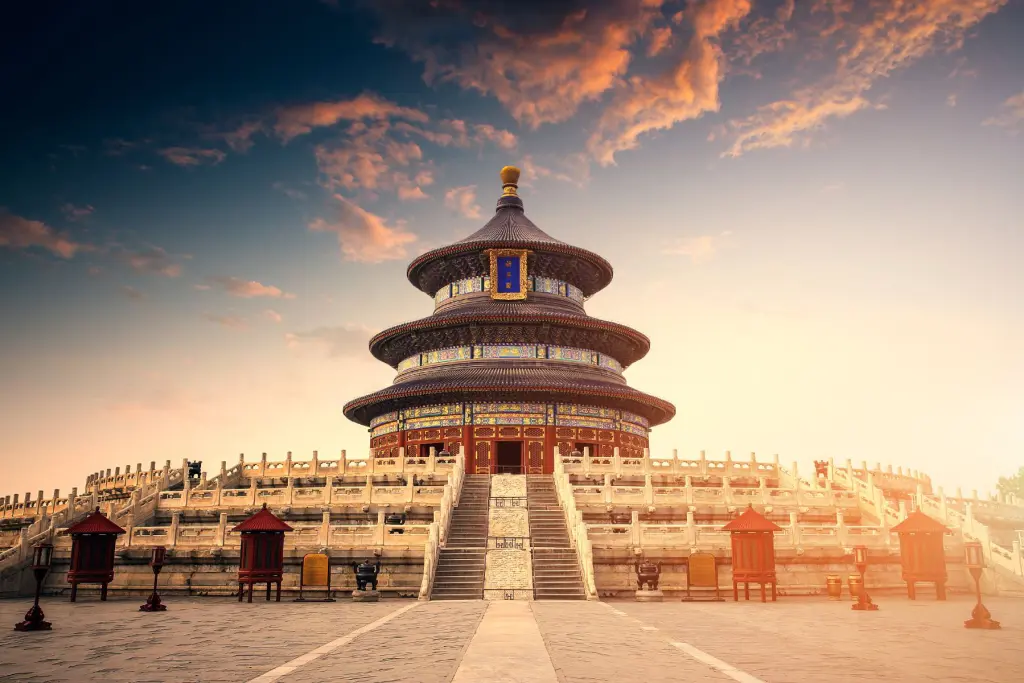
4. Tiananmen Square
Whether you know it or not, you’ve seen this place in history books. Tiananmen Square is the world’s largest public square – it can hold one million people – and it’s where some of the most important moments in modern Chinese history happened.
Standing in the square is surreal. It’s simultaneously one of the most famous places on Earth and one of the most carefully maintained. You’ll see Chinese families taking photos in this significant space where important moments in modern Chinese history occurred.
What’s There:
- Mao’s Mausoleum (yes, you can see his actual preserved body)
- Monument to the People’s Heroes
- Great Hall of the People (China’s parliament building)
- National Museum of China
Culture Note: Photography is restricted in certain areas, and security is intense. This isn’t just another tourist square – it’s the symbolic heart of modern China.
Timing: Visit early morning or evening when the flag-raising/lowering ceremonies happen with full military honors.
5. Summer Palace (Yiheyuan)
The Summer Palace is what happens when an empress with unlimited funds decides she needs a vacation home. Empress Dowager Cixi built this as her escape from the stuffy Forbidden City, and it’s probably the most beautiful park you’ve ever seen.
Here’s the crazy part: Cixi built this pleasure palace with money that was supposed to fund China’s navy. While other countries were building warships, she was creating artificial lakes and marble boats. The result? China lost several wars, but gained this UNESCO World Heritage site.
The Marble Boat: There’s an actual boat made of marble that sits on the lake. It doesn’t float (obviously), but it perfectly represents the disconnect between imperial luxury and practical governance that eventually brought down the Qing Dynasty.
Must-See Spots:
- Longevity Hill with its pagoda views
- The Long Corridor (728 meters of painted scenes)
- Kunming Lake (perfect for boat rides)
- Suzhou Street (reconstructed shopping street)
Cultural Insight: This is where you’ll understand Chinese garden philosophy – every view is designed to be a living painting, with careful placement of rocks, trees, and water to create perfect compositions.
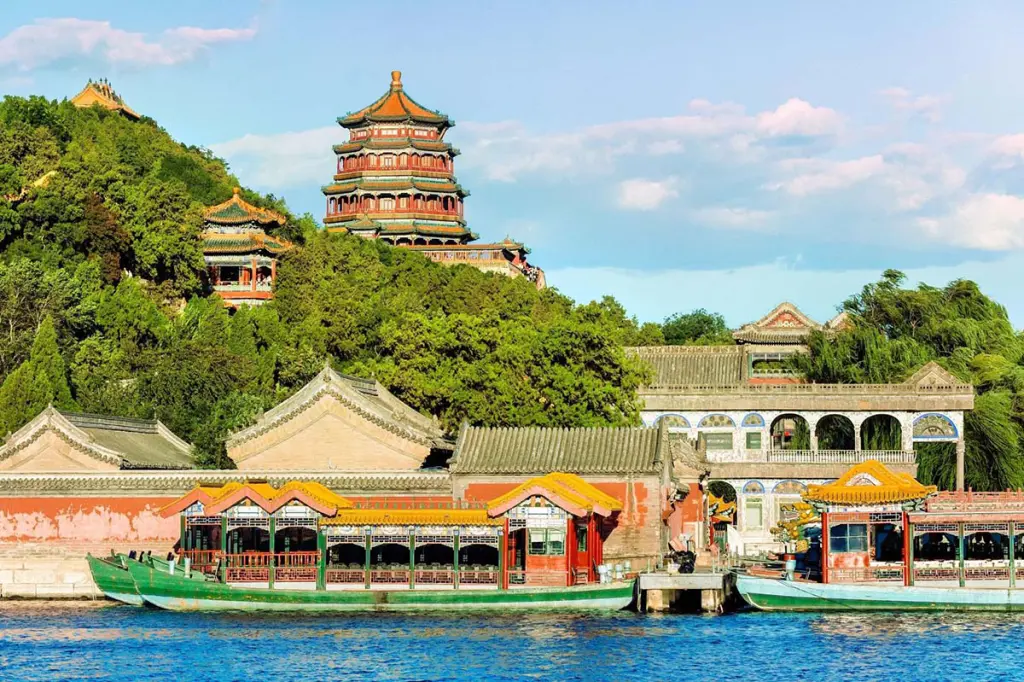
6. Lama Temple (Yonghe Gong)
The Lama Temple is where Tibetan Buddhism meets Han Chinese culture, and the result is absolutely mind-bending. This isn’t just one of the significant Beijing tourist attractions – it’s active temple where real monks live and worship.
The Shock Factor: The main Buddha statue is 18 meters tall and carved from a single sandalwood tree. When you walk into that hall, the scale will make your jaw drop. This isn’t a replica or reconstruction – it’s been standing there since 1750.
Living Religion: Unlike many temples in China, this one is fully functional. You’ll see Chinese people burning incense, making prayers, and leaving offerings alongside Tibetan monks in red robes. The mix of cultures and the intensity of belief is palpable.
Pro Tips:
- Photography is forbidden inside halls (respect this rule)
- Buy incense outside the temple – it’s cheaper
- Visit during prayer times (early morning) for the full experience
- Don’t point your feet toward Buddha statues when sitting
What Makes It Special: This is the only Tibetan Buddhist temple in Beijing where foreigners can witness authentic religious practices without feeling like intruders.
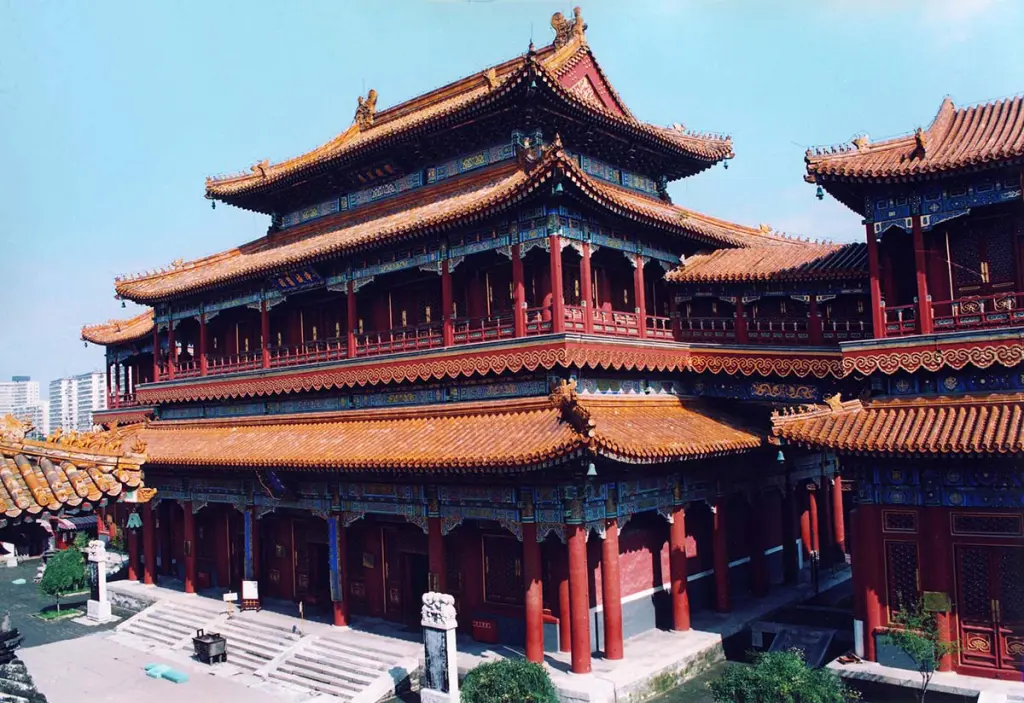
7. Beihai Park
Beihai Park is Beijing’s best-kept secret among Beijing attractions. While tourists crowd the Summer Palace, locals come here for authentic Chinese park culture. This isn’t just a park – it’s a 1,000-year-old imperial garden that predates the Forbidden City.
The White Pagoda: The park’s centerpiece is a white Tibetan-style pagoda sitting on an artificial island in the middle of a lake. It’s visible from across Beijing on clear days and has been a landmark for nearly 400 years.
Real Beijing Life: This is where you’ll see authentic hutong culture. Elderly men playing Chinese chess, families practicing calligraphy with water on stone paths, and groups singing traditional Chinese opera. It’s like stepping into old Beijing.
Hidden Gem: The Nine Dragon Screen – a 27-meter-long wall covered in glazed tiles depicting nine dragons. It’s over 600 years old and one of only three like it in China.
Best Experience: Rent a paddle boat and navigate around the lake. For about $5, you get a completely different perspective of imperial Beijing architecture from the water.
[Suggested image: White Pagoda reflected in the lake with traditional Chinese boats in foreground]
8. 798 Art District
This is where Beijing’s mind-bending contradictions become art. 798 is a former military factory complex from the 1950s that’s been transformed into China’s answer to New York’s SoHo. It’s probably the last place you’d expect to find cutting-edge contemporary art in China.
The Cultural Shock: You’ll see art installations critiquing Chinese society displayed in buildings that once manufactured military equipment. It’s surreal – propaganda posters from the Cultural Revolution hanging next to avant-garde sculptures that would have gotten their creators imprisoned 50 years ago.
What You’ll Find:
- International art galleries showcasing Chinese contemporary artists
- Quirky cafes in converted factory spaces
- Design studios and creative spaces
- The occasional government-sanctioned street art
The Reality Check: This represents the China that Western media rarely shows – creative, irreverent, and surprisingly open to artistic expression within certain boundaries.
Practical Info:
- Most galleries are free to enter
- Best visited on weekends when more galleries are open
- Combine with nearby 751 Design District for a full day
- Great for unique souvenirs that aren’t made in tourist factories
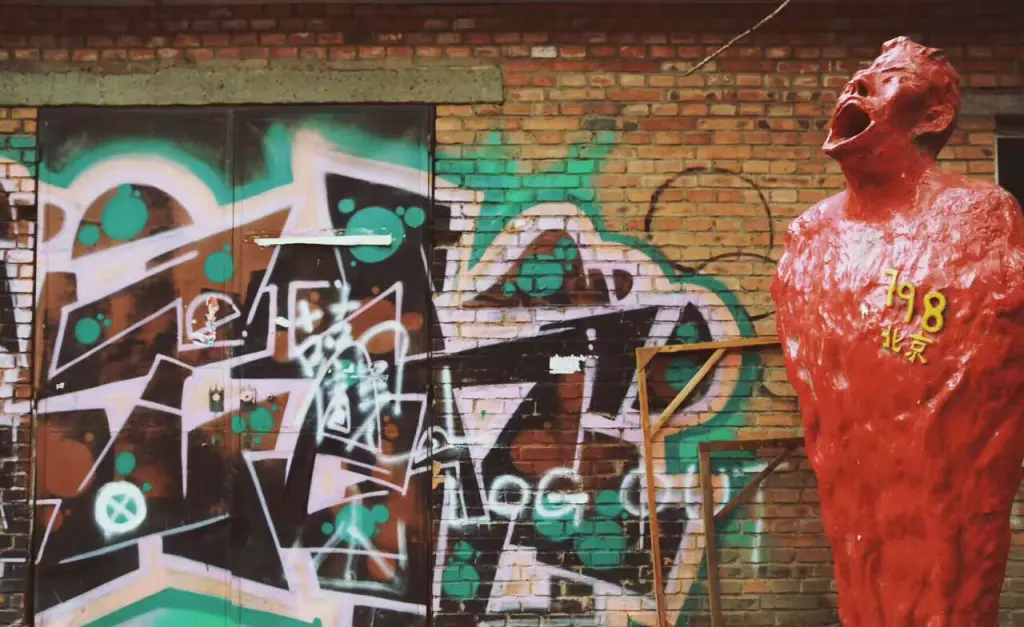
9. Hutong Neighborhoods (Nanluoguxiang & Shichahai)
Hutongs are Beijing’s ancient alleyways, and walking through them is like time travel. These narrow lanes lined with traditional courtyard houses (siheyuan) are where real Beijing people have lived for over 700 years. This is the Beijing that exists between the tourist sites.
Nanluoguxiang: This hutong has been gentrified into a tourist-friendly version of old Beijing, but it’s still charming. You’ll find traditional architecture filled with modern bars, boutiques, and restaurants. It’s touristy, but it’s also a good introduction to hutong life.
Shichahai: This is more authentic – a network of hutongs around three lakes where locals still live, work, and play. You can take a rickshaw tour, but walking is better for really experiencing the neighborhood.
Cultural Reality: Many hutongs are disappearing as Beijing modernizes. What you’re seeing is literally disappearing Beijing – these neighborhoods might not exist in 20 years.
What You’ll Experience:
- Public bathrooms (many hutong homes don’t have private toilets)
- Elderly people sitting outside their homes, playing cards
- Tiny restaurants serving authentic Beijing cuisine
- Courtyard homes that have housed the same families for generations
Pro Tip: Visit both day and night – the atmosphere completely changes after dark when the bars open and young Beijingers come out to socialize.
[Suggested image: Traditional hutong alley with bicycles, traditional architecture, and local residents]
10. Beijing National Stadium (Bird’s Nest)
The Bird’s Nest isn’t just a stadium – it’s a symbol of modern China’s ambitions made concrete and steel. Designed for the 2008 Olympics, this architectural marvel represents China’s announcement to the world that it had arrived as a global superpower.
The Engineering Marvel: The stadium looks like it’s made of interwoven steel branches, but every beam was precisely calculated. It can withstand major earthquakes and accommodate 91,000 people. The design is so complex that it took Chinese and Swiss engineers working together to figure out how to build it.
Cultural Significance: This building represents everything the new China wants to be – innovative, impressive, and unmistakably modern while somehow still feeling organic and natural.
What You Can Do:
- Take guided tours of the interior (about $8)
- Visit the observation deck for city views
- See it illuminated at night (free and spectacular)
- Combine with nearby Water Cube (Olympic Aquatics Center)
Photo Op: The best shots are from the nearby Olympic Park, especially at sunset when the steel structure glows against the Beijing skyline.
[Suggested image: Bird’s Nest stadium at sunset/evening with lighting, showing its distinctive interwoven steel structure]
11. Wangfujing Street
Wangfujing is Beijing’s most famous shopping street, but it’s also one of the city’s biggest cultural shock experiences. This is where traditional Chinese street food meets luxury international brands, creating a sensory overload that perfectly captures modern Beijing.
The Famous Snack Street: This is where you’ll find the most exotic street food in Beijing. We’re talking scorpions on sticks, silk worm pupae, and regional specialties you might not recognize. Don’t worry – there’s familiar food too, but the unique offerings are what make it memorable.
Cultural Mix: You’ll see luxury international brands next to traditional Chinese medicine shops, global fast food chains across from vendors selling thousand-year-old eggs. It’s globalization and tradition creating a uniquely vibrant atmosphere.
Must-Try Foods (If You Dare):
- Jianbing (Chinese crepe) – actually delicious
- Stinky tofu – smells awful, tastes… interesting
- Scorpions on sticks – crunchy, surprisingly mild
- Traditional Beijing duck wraps
Shopping Reality: Most of the “traditional” shops are tourist-oriented, but the experience itself is authentically chaotic and uniquely Beijing.
[Suggested image: Busy Wangfujing street at night with neon signs, street food vendors, and crowds]
12. Ming Tombs (Dingling)
The Ming Tombs are where 13 emperors of the Ming Dynasty are buried, and visiting feels like discovering a secret that was hidden for centuries. Most tourists skip this, which is exactly why you shouldn’t.
Dingling Tomb: This is the only Ming tomb that has been excavated and opened to the public. You can actually walk into the underground burial chamber where Emperor Wanli and his two empresses were laid to rest 400 years ago.
The Underground Palace: The tomb is built like an underground palace with multiple chambers. The main burial chamber is 27 meters underground and contains the original coffins, burial goods, and imperial artifacts.
Why It’s Mind-Blowing: You’re standing in a space that was sealed shut in 1620 and not reopened until 1956. The air you’re breathing is the same air that surrounded these emperors for over 300 years.
Sacred Way: The approach to the tombs is lined with massive stone statues of animals and officials – it’s like walking through an ancient sculpture park that leads to death.
Getting There: About 1.5 hours from central Beijing by public transport, or join a tour that includes the Great Wall.
[Suggested image: Stone animal statues along the Sacred Way leading to Ming Tombs]
13. Jingshan Park
Jingshan Park gives you the best panoramic view of the Forbidden City and Beijing, but it’s also where the last Ming emperor hanged himself in 1644 when peasant rebels conquered Beijing. History and Instagram-worthy views in one location.
The Viewing Experience: From the pavilion at the top of Jingshan Hill, you can see the entire layout of the Forbidden City spread out below you like a 3D map. This is the shot that makes people understand the true scale and symmetry of imperial Chinese architecture.
Historical Significance: The hill itself is artificial – it was built from earth excavated when the Forbidden City’s moats were dug. Emperor Chongzhen climbed this hill and hanged himself from a tree when he realized his dynasty was finished.
Best Times:
- Sunset for golden light on the Forbidden City
- Early morning for fewer crowds and clearer air
- Winter mornings after snowfall for magical views
Pro Tip: Combine this with a Forbidden City visit – use Jingshan to get your bearings before diving into the palace complex.
[Suggested image: Panoramic view of Forbidden City from Jingshan Park showing the symmetrical layout of buildings]
14. Prince Gong’s Mansion
Prince Gong’s Mansion is the world’s best-preserved example of a Qing Dynasty prince’s residence, and it’s where you’ll understand how China’s aristocracy actually lived. This isn’t imperial grandeur – it’s elegant wealth with incredible attention to detail.
The Garden: The private garden is considered one of Beijing’s most beautiful. Every element is carefully designed according to Chinese feng shui principles – the placement of rocks, water, and plants creates perfect harmony.
Historical Context: This mansion belonged to Heshen, one of the most corrupt officials in Chinese history, and later to Prince Gong, who was instrumental in China’s early modernization. The building itself tells the story of China’s transition from ancient empire to modern nation.
Architectural Details: Unlike the overwhelming scale of imperial palaces, this mansion shows refined taste – intricate woodwork, delicate paintings, and furniture that demonstrates the height of Chinese craftsmanship.
Cultural Insight: This is where you’ll understand the difference between imperial power (Forbidden City) and aristocratic refinement (Prince Gong’s Mansion).
[Suggested image: Traditional Chinese garden at Prince Gong’s Mansion with pavilion, pond, and rocks]
15. Olympic Park and National Centre for the Performing Arts
Olympic Park isn’t just about sports – it’s modern China’s attempt to create a cultural center that rivals anything in the world. The National Centre for the Performing Arts (The Egg) is probably the most futuristic building you’ll see in Beijing.
The Egg: Officially called the National Centre for the Performing Arts, this titanium and glass dome sits in the middle of an artificial lake like something from a science fiction movie. Designed by French architect Paul Andreu, it’s meant to represent the harmony between tradition and modernity.
Inside Experience: The interior is even more impressive than the exterior. The main opera hall seats 2,416 people and has acoustics that rival Vienna’s State Opera. Even if you don’t see a performance, the building tour is worth it.
Olympic Park: The area around Bird’s Nest and Water Cube has been turned into a massive public park. It’s where Beijing residents come for evening walks, exercise, and to feel proud of what their country accomplished.
Evening Magic: Visit at night when both the Egg and the Olympic venues are illuminated. The reflection in the water creates one of Beijing’s most photogenic scenes.
[Suggested image: National Centre for the Performing Arts (The Egg) at night with reflections in the surrounding water]
16. Shougang Park (Beijing’s Cyberpunk Industrial Wonder)
Beijing’s most unexpected transformation story is happening at Shougang Park, where a century-old steel mill has been reborn as a futuristic cultural destination. This isn’t just urban renewal – it’s China showing the world how industrial heritage can become cutting-edge cool.
The Transformation: The massive cooling towers, blast furnaces, and industrial structures have been converted into exhibition spaces, event venues, and Instagram-worthy backdrops that look straight out of a sci-fi movie. The contrast between raw industrial architecture and sleek modern additions creates an aesthetic that’s uniquely Beijing 2025.
2022 Olympic Legacy: This was the headquarters for the Beijing Winter Olympics, and many of the Olympic facilities remain open to visitors. You can try winter sports year-round in climate-controlled environments, or just marvel at how China transformed an abandoned industrial site into an Olympic venue in record time.
What You’ll Experience:
- Big Air Shougang: The world’s first permanent big air venue, built into a former cooling tower
- Industrial Heritage Museum: Learn how this site powered Beijing’s growth for decades
- Rooftop Gardens: Green spaces built on top of former factory buildings
- Adventure Sports: Rock climbing, skiing simulators, and extreme sports facilities
The Cultural Shift: This represents Beijing’s evolution from heavy industry to creative economy. It’s where young Beijingers come to work in tech startups housed in former steel workshops, creating a vibe that’s part Brooklyn, part Tokyo, and entirely Chinese.
Best Time to Visit: Evening, when the industrial structures are illuminated and the contrast between old and new is most dramatic.
Getting There: Take Line 1 to Pingguoyuan Station, then bus S1 to Shougang Park Station
[Suggested image: Shougang Park’s illuminated cooling towers at night with modern lighting]
17. Liangma River International Waterfront
Liangma River represents Beijing’s newest face – an illuminated waterfront district that rivals Singapore or Dubai for sheer visual impact. This is where Beijing shows off its international ambitions and creates spaces that feel more like a global metropolis than traditional China.
The Night Cruise Experience: The evening boat tour along Liangma River is Beijing’s answer to Paris’s Seine cruises, but with a distinctly 21st-century twist. LED-lit bridges, waterfront restaurants, and diplomatic district buildings create a skyline that most visitors never expect to see in Beijing.
International District Atmosphere: This area around the river is home to numerous embassies, international schools, and expat communities. Walking along the waterfront feels like being in an international city that happens to be in China – signs in multiple languages, diverse restaurants, and a cosmopolitan energy.
What Makes It Special:
- Illuminated Bridges: Each bridge along the river features different LED light displays that change with seasons and events
- Waterfront Dining: High-end restaurants with river views serving international cuisine
- Cultural Mixing: Chinese families, diplomatic staff, and international students all sharing the same recreational space
Evening Magic: The best time to experience Liangma River is after dark when the lighting transforms it into Beijing’s most photogenic district. The reflections in the water create a mirror image of the illuminated cityscape.
Cultural Significance: This represents Beijing’s successful integration into the global community – a space where international and Chinese cultures blend naturally rather than awkwardly.
Practical Info:
- Evening cruises: ¥168-298 depending on route and season
- Book through official WeChat mini-program “亮马河游船”
- Dinner cruises available with international cuisine options
Getting There: Take Line 10 to Liangmaqiao Station, then 5-minute walk to the waterfront
[Suggested image: Liangma River evening cruise with illuminated bridges and city reflections in the water]
2025 Travel Essentials for Beijing
Booking & Payment Revolution
Critical Update: Beijing tourism has gone almost entirely digital in 2025. Here’s what every foreign visitor needs to know:
Advance Reservations Required:
- Forbidden City, Temple of Heaven, Summer Palace, Great Wall sections: Must book 1-10 days in advance through official WeChat mini-programs or websites
- No walk-up tickets available at major attractions
- Keep your passport handy – all bookings require real-name registration
Payment Solutions for 2025:
- Most tourist areas now accept international credit cards (Visa, Mastercard)
- Alipay Tour Pass and WeChat Pay for Foreigners available for 90-day periods
- Mobile payment widely preferred over cash
- Download apps before arrival for smoother experience
New Beijing Highlights for 2025
Shougang Park: Former steel mill turned into a cyberpunk wonderland with industrial architecture, winter sports facilities, and stunning city views – now a must-visit destination showcasing Beijing’s industrial transformation
Liangma River International District: Illuminated evening cruise along the diplomatic quarter, offering a sophisticated waterfront experience that rivals world-class cities
Universal Beijing Resort: Now fully operational with all themed areas, including the world’s largest Harry Potter themed area
Seasonal Planning Guide
Spring (March-May):
- Perfect for: Forbidden City (fewer crowds), Temple of Heaven parks
- Blooming season: Zhongshan Park for tulips, Jingshan Park for peonies
- Temperature: 10-25°C
Summer (June-August):
- Best for: Early morning Great Wall visits, hutong evening tours
- Evening activities: Shichahai bar district, outdoor markets
- Temperature: 20-35°C, high humidity
Fall (September-November):
- Ideal for: All outdoor attractions, photography
- Peak colors: Fragrant Hills, Olympic Park
- Temperature: 5-20°C, clear skies
Winter (December-February):
- Unique experiences: Snow-covered Forbidden City, ice skating at Houhai
- Fewer crowds at all major attractions
- Temperature: -10-5°C
Essential Apps for 2025 Beijing
Navigation & Transport:
- Baidu Maps (works better than Google Maps in China)
- Beijing Subway official app
- Didi (Chinese ride-hailing, works with international cards)
Translation & Cultural Bridge:
- Pleco (Chinese-English dictionary with camera scan)
- Google Translate (download Chinese for offline use)
- Waygo (instant camera translation for menus)
Booking & Payments:
- Alipay (register Tour Pass before arrival)
- WeChat (essential for attraction bookings)
- Trip.com (English interface for local bookings)
Recommended Itineraries by Theme
Historical Heritage (3-4 days):
- Day 1: Forbidden City → Jingshan Park → Beihai Park
- Day 2: Great Wall (Mutianyu) → Ming Tombs
- Day 3: Temple of Heaven → Lama Temple → hutong exploration
- Day 4: Summer Palace → Prince Gong’s Mansion
Modern Beijing Experience (2-3 days):
- Day 1: Olympic Park (Bird’s Nest, Water Cube) → 798 Art District
- Day 2: Shougang Park → National Centre for Performing Arts
- Day 3: Wangfujing Street → Sanlitun district → Liangma River cruise
Cultural Immersion (2-3 days):
- Day 1: Hutong walking tour → Shichahai lakes → traditional tea house
- Day 2: Lama Temple → local market visit → Peking Opera show
- Day 3: Traditional medicine experience → calligraphy workshop → local family dinner
Getting Around Beijing in 2025
Subway: Fast, efficient (¥4-9 per ride depending on distance), covers all major Beijing tourist attractions
- Download “Beijing Subway” app for English navigation
- Use Beijing Municipal Card or mobile payment for discounts (about 20% off)
- Rush hours: 7-9 AM, 5-7 PM (avoid if possible)
Didi (Chinese ride-sharing):
- Now accepts international credit cards
- Download app before arrival
- English interface available
Bike Sharing:
- Perfect for hutong exploration
- Scan QR codes with mobile payment apps
- Helmet not provided – consider bringing your own
Taxis: More expensive, but drivers increasingly use translation apps
Cultural Etiquette for 2025
At Religious Sites: Remove hats, speak quietly, don’t point feet toward Buddha statues Photography: Most temples now allow photos in courtyards, but not inside halls Mobile Payments: It’s normal to pay for everything digitally – even street vendors Queue Culture: More organized than before, but still more relaxed than Western standards Tipping: Still not expected in most situations
Language Bridge Tips
Download These Phrases:
- “Qǐng wèn” (请问) = “Excuse me”
- “Xièxie” (谢谢) = “Thank you”
- “Bù hǎo yìsi” (不好意思) = “Sorry/Excuse me”
- Show your phone with Chinese characters for destinations
The city will challenge every assumption you have about Chinese culture, daily life, and urban development. You’ll find ancient temples surrounded by gleaming skyscrapers, traditional markets next to luxury malls, and some of the most welcoming people you’ve ever met living in a rapidly modernizing society.
2025 Reality Check: Beijing has become incredibly foreigner-friendly. Digital payment systems work with international cards, English signage is everywhere in tourist areas, and the city genuinely wants international visitors to have amazing experiences.
Pro Tip: Don’t try to see everything in one trip. Beijing deserves at least a week, but even if you only have three days, these attractions will give you stories you’ll be telling for years.
Remember: Beijing isn’t trying to be like any other city in the world. It’s confidently Chinese, proudly historical, and boldly modern. Come with an open mind, comfortable walking shoes, and your phone charged for mobile payments – you’re about to experience one of the world’s most dynamic capitals.
Whether you’re drawn by the history, the food, the architecture, or simply the adventure of experiencing a completely different culture, Beijing’s attractions will exceed your expectations in ways you can’t imagine.
Start planning now – Beijing is waiting to blow your mind.
